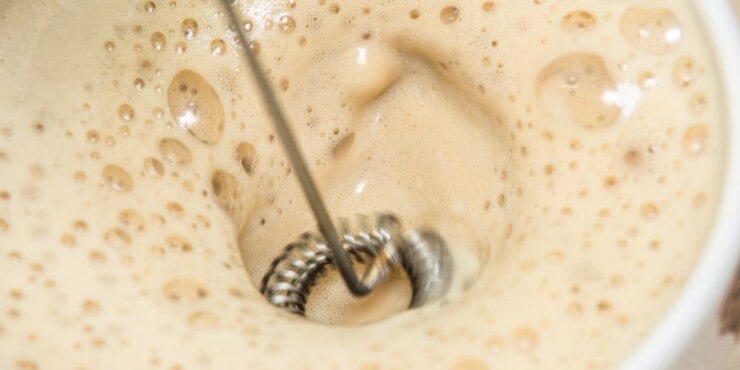Do you know how the foamy cream that appears when preparing espresso is created? Have you ever wondered what coffee foam is specifically? In this guide, we tell you everything.
What is Coffee Foam?
This foam is created during the preparation of coffee when it is prepared using an espresso machine. Specifically, this preparation process consists of obtaining the coffee by pumping hot water at high pressure.
Why is this happening? How is the coffee foam produced?
Well, because in this process the high pressure extracts, from the coffee beans, the oils inside. As well as the carbohydrates it contains. These carbohydrates are the ones that stabilize the bubbles that are produced in the process, thus obtaining the foam or cream of the coffee.
What is Milk Froth?
Not only do we get our coffee to have that sparkling appearance when brewing coffee, but it is also achieved with milk But why does the milk froth? When we use the steam wand to cream the milk (as we mentioned above with coffee), a chemical change occurs in the milk proteins, which are the compounds that are most affected by heat.
The milk proteins are caseins and proteins of whey, each having different structures and sizes, so exposed to different factors, in this case, the heat to the cremating milk will behave in different ways.
How do the proteins in milk exposed to heat behave when we cream the milk?
When the milk comes into contact with the steam wand, caseins retain their structure much better, as they are much more heat stable than whey proteins.
However, the latter have more complex structures that unfold when heated to more than 40ºC. This process is known as denaturation, which means that once this point is reached, the milk proteins will not behave the same again.
Have you noticed that burnt milk tastes different?
The reason is that to cream the milk we must take into account the temperature and the time. When we burn the milk it achieves a sulfuric taste and not only does it taste unpleasant, but the process fails. These are two very important factors so that the heat does not affect all the proteins in the whey.
The temperature and the heat that we apply will be the success to obtain foam in the milk.
When we cream the milk using the steam wand, we are introducing steam and high-pressure air into the milk to heat it. The milk proteins create spheres around the air by forming bubbles.
If we cream the milk around 30ºC or 40ºC, large air bubbles form in a few minutes, the texture and density achieved are not stable.
However, if we increase the temperature to around 60ºC we achieve a more stable milk texture and a better density since smaller and better-distributed air bubbles are produced. Proteins that have not been affected by heat stabilize air bubbles by covering them and protecting them from melting.
If we continue heating the milk, the proteins will be completely denatured, so there will not be enough left to stabilize the bubbles. This is the fundamental factor why we cannot re-cream the milk.
Today, creamed milk is used in the making of latte art. Cappuccinos, lattes, and flat whites are the quintessential coffees that need cream or textured milk.
More and more experts make incredible designs with milk foam in our coffee, playing with their colors, textures, and density.

